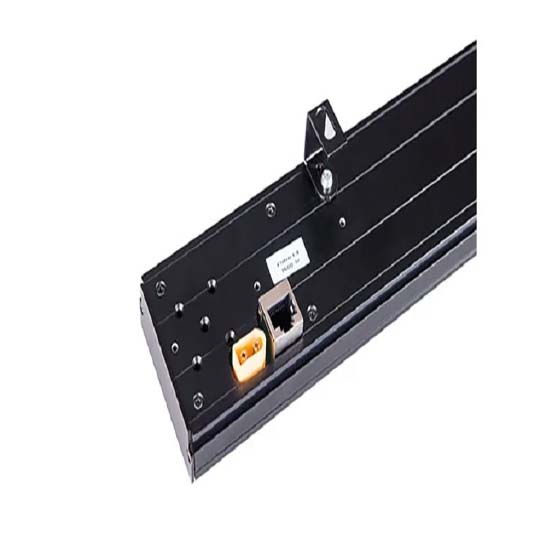
The short answer is LED. In led backlight diapaly, the pixels on the screen are illuminated by a backlight of LED. Two backlight options for liquid crystal displays (LCDs) are LED or CCFL. There is no need for a backlight for organic LEDs.
The LED backlight LCD technology is based on replacing the fluorescent backlight with an LED light-emitting diode. One of LCD's "future core technologies" is LED backlight display technology.
CCFL Backlight Display Contrast and LED Backlight LCD Display
A backlight is a kind of illumination often used in LCD screens in the electronics industry. As the name suggests, the front light shines directly on your face while the backlight shines from the side or behind, as its name suggests. LEDs on the back of the screen LCD are used to describe LCD screens with LED backlights. With LED backlight display technology LCD, it is possible to replicate almost all of the natural sights experienced by humans.
Light from a cold cathode fluorescent bulb is often used in LCDs. LED backlight displays to have a lower power usage, a lower calorific value, a higher brightness, and a longer service life than typical CCFL (cold cathode tube) displays. Traditional backlight systems are projected to be displaced by this technology shortly.
Types of Backlights
EL (Electroluminescent Lamp)
Colored phosphors are used in an EL backlight to create light. These tiny, light and homogeneous EL backlights are a great alternative to traditional incandescent bulbs. Colorful EL panels are readily accessible. Although they have low power consumption, they need an inverter to convert a DC input of 5, 12, or 24 volts to an AC output of 100 VAC @ 400 Hz. Additionally, the half-life of EL backlights is just 3,000 to 5,000 hours, making them unsuitable for prolonged use. Additional costs for an inverter and the short life expectancy of an EL panel are the main downsides of this technology. As a result of these drawbacks, EL panels are no longer commonly employed in new construction.
Edge-Lit LED Backlight
Edge-lit LED backlights have LEDs arranged along the edge of a small plastic lighting guide, distributing the light uniformly over the LCD screen. Backlighting of this sort is the most often utilized nowadays.
LED Array
To create an LED array backlight, a shallow plastic tray is lined with exterior LEDs, sealed with a transparent epoxy. In contrast to edge-lit displays, which emit light from the side, this kind emits light straight up via a diffuser layer and into the LCD panel itself.
CCFL
They are compact, high-voltage fluorescent lamps that emit a fluorescent light source made of lead glass and mercury vapor. The CCFLs and the plastic light guide distribute light evenly over the LCD panel's front surface. CCFLs are seldom employed in today's designs because of their high-power consumption, high cost, and dangerous ingredients.
Why Is LED Backlight Display Technology Getting So Much Attention?
The primary benefit of the LED backlighting is its exceptional brightness, as can be seen in color-LED backlit televisions. Video devices' color reduction properties are often measured using the NTSC standard in the industry. Using this index, display equipment may be presented on all colors what type of saturation they can achieve and can do so in a noticeable way.
Benefits Of LED Backlight LCD Display Technology
LED backlight displays have a long lifespan. Compared to a standard incandescent light, a typical LED bulb may survive more than 10 years. Since LEDs have a planar structure and robust internal structure, they have excellent seismic performance. A basic luminous unit is a 3 5mm side height square package, which is extremely simple to combine into a particular region of surface light with superb brightness uniformity. The additional optical components required for LCD TVs may be simplified, and the uniformity of the screen brightness is improved if LEDs are utilized as the backlight.
The typical CCFL bulb has a low flickering frequency, which might cause a flickering picture in a dynamic situation. In comparison to CCFL backlights, LED backlights may be freely adjusted in luminous frequency, and the frequency is much greater.
Light-emitting diodes (LED) have a wide range of brightness settings, making them ideal for various work environments, unlike CCFL bulbs, which have a predetermined minimum brightness level. LED bulbs are also more durable than CCFL bulbs since they can withstand repeated opening and shutting. Utilizing the world's most advanced lighting production technology, the LED backlight display is produced using a light source that is incredibly near the human eye, increasing the luminous surface.
Environmentally friendly LED backlights do not contain mercury, lead, or other dangerous elements. LED backlights typically operate at temperatures between -20°C and 80°C. LED is powered by a 5-24v low-voltage source and does not need a high voltage. As a result of the power supply module's simple construction and high level of safety.
Color gamut and expressiveness on LED-backlit displays are better than CCFL backlit LCDs. This means that LEDs may be used to show a wide range of color properties since they can produce light independently of each other in red, green, and blue. The LCD's overall contrast and brightness may be improved by adjusting the LED backlight's white balance.
